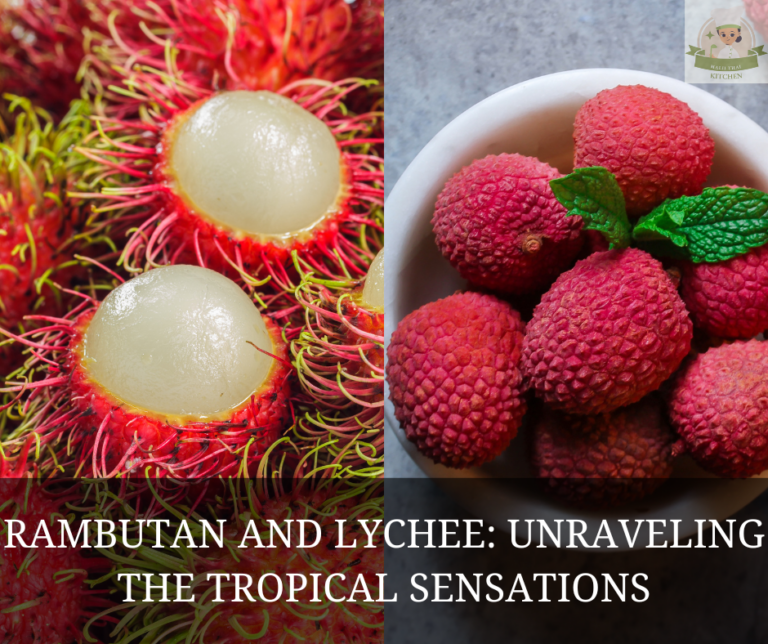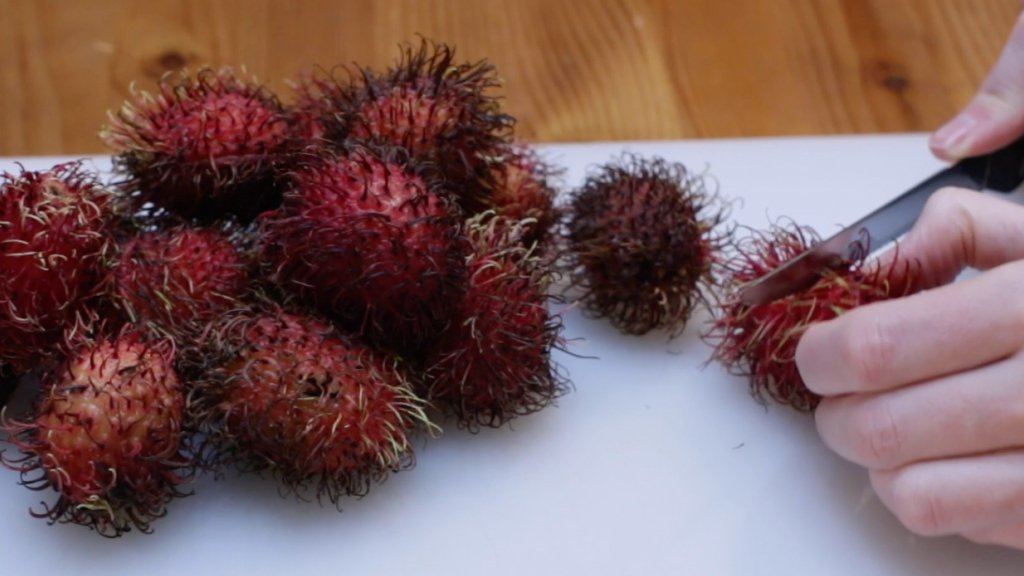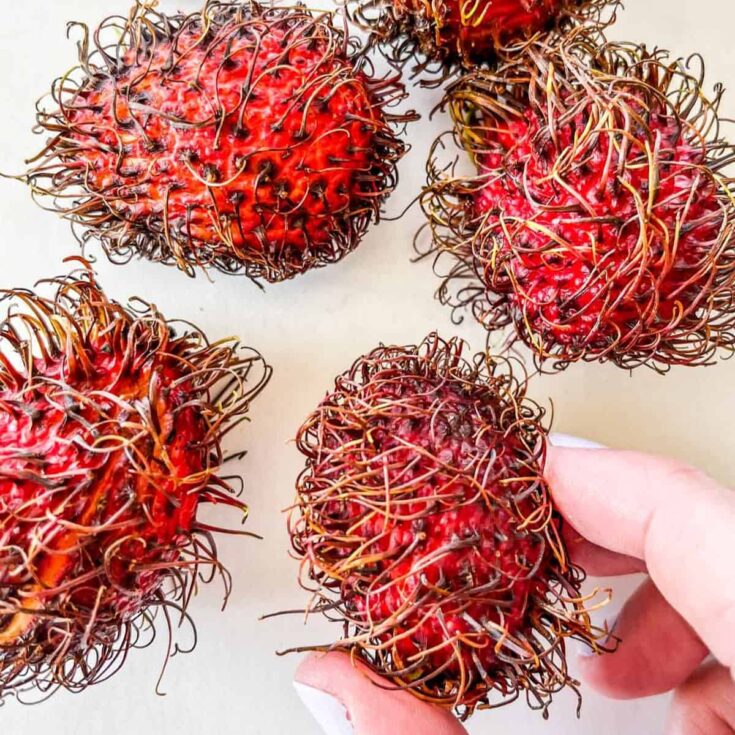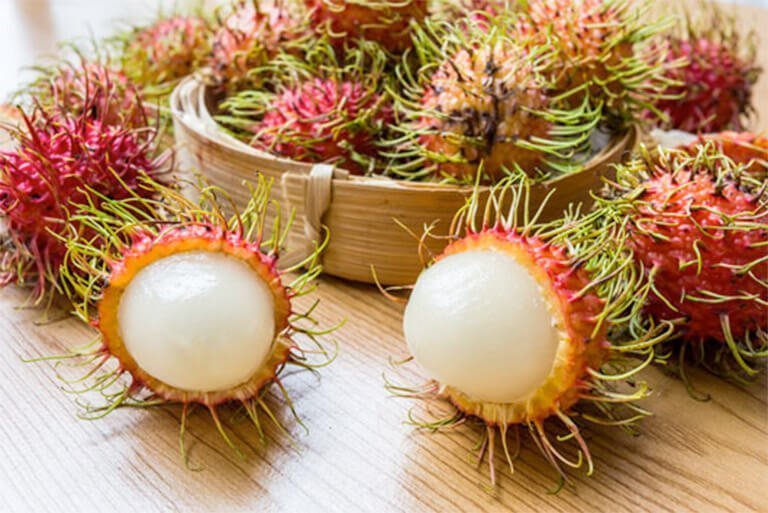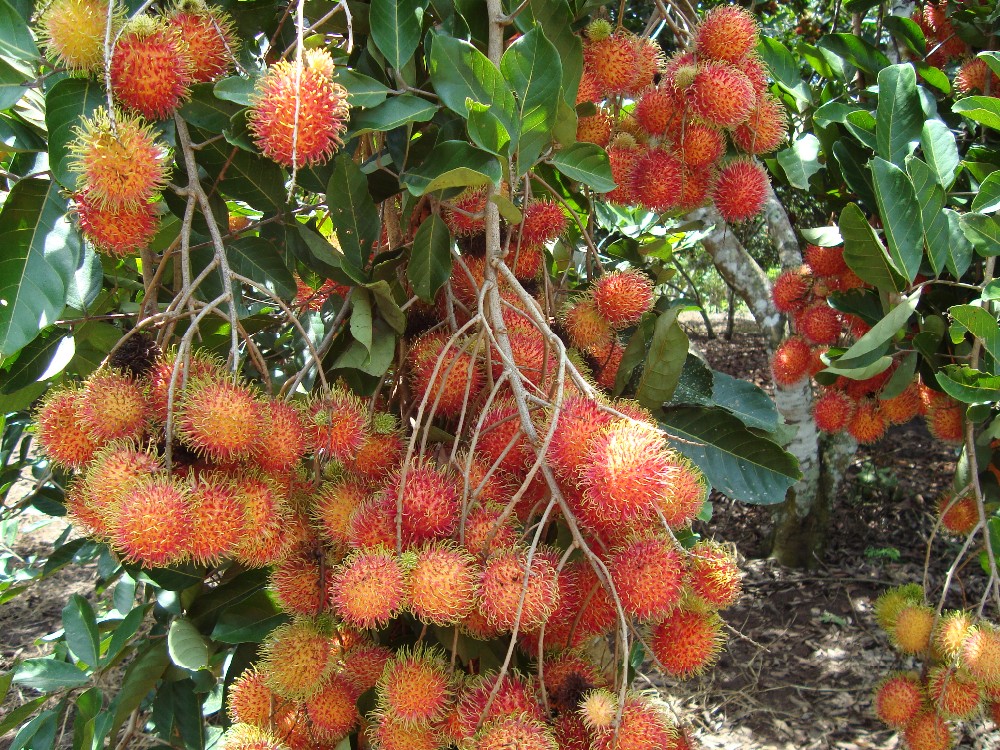Lychee vs Rambutan: Unraveling the Exotic Delights
– Rambutan and lychee are both sweet, exotic fruits from Southeast Asia.
– Rambutan has a dark crimson skin covered in soft hairs and a sweet, creamy flesh.
– It is grown in Southeast Asia, Thailand, Vietnam, and Central America, as well as some parts of the US.
– Rambutan tastes similar to grapes, with a slightly sour flavor.
– It is considered a “superfood” due to its high levels of antioxidants and is rich in vitamins and nutrients.
– Rambutan can be eaten raw and used in fruit salads, smoothies, and cooked dishes.
– Lychee is another fruit from the same family as rambutan, with a pinkish-red skin and firm, juicy flesh.
– It is native to Southeast Asia and grows on trees up to 100 feet tall.
– Lychee is commonly eaten raw or used in smoothies, drinks, and salads.
– It is cultivated in various countries including China, Thailand, Vietnam, India, Brazil, the Caribbean, Australia, California, and Florida.
– Lychee is also known as litchi or lichi and sometimes referred to as “alligator strawberry” due to its bumpy, reddish-pink skin.
– Lychee has a sweet and slightly floral flavor, often compared to pineapple, grapes, and strawberries.
– It is high in vitamins and minerals, including iron, copper, manganese, phosphorus, and magnesium.
– The flesh of lychee should be eaten, while the skin and seeds should be avoided due to toxins.
– Lychee is commonly used in sweet treats, smoothies, juices, and desserts.
– Rambutan is another popular tropical fruit that grows in Southeast Asia.
– It shares similarities with lychee in terms of sweetness and acidity, as well as being high in vitamins and antioxidants.
– Rambutan has hairy skin ranging from yellow-orange to crimson red.
– Rambutan is creamier and sweeter compared to lychee, often likened to a sweet and slightly tart grape.
– Rambutan is lower in calories and sugar than lychee.
– Lychee has bumpy skin, while rambutan is hairy.
– Lychee is crisp and tart, while rambutan is sweet, fruity, slightly acidic, and mildly tart.
– Rambutan is also known as “hairy lychee” due to its hairy appearance.
– Rambutan and lychee are similar fruits but have notable differences in appearance, texture, and taste.
